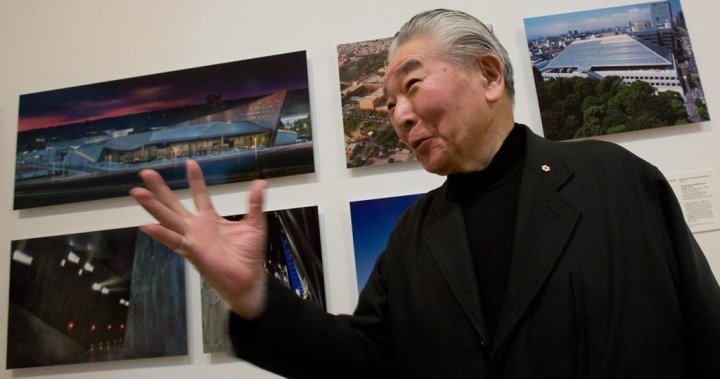
Raymond Moriyama, architect behind iconic Canadian buildings, dies at 93
Global News
Moriyama was behind the creation of numerous iconic landmarks both in Canada and abroad, including the National War Museum, Ottawa's City Hall, and the Toronto Reference Library.
Raymond Moriyama, a renowned architect behind the design of some of Canada’s most iconic buildings, has died. He was 93.
A spokesperson for the architecture firm he founded said Moriyama died on Friday, but offered few other details.
“The world has lost a visionary architect and (his family members) have lost a treasured loved one,” read the statement from Moriyama Teshima Architects.
Moriyama was behind the creation of numerous iconic landmarks both in Canada and abroad, including the National War Museum, Ottawa’s City Hall, the Bata Shoe Museum, the Toronto Reference Library, the Ontario Science Centre, the Saudi Arabian National Museum and the Canadian Embassy in Tokyo.
Earlier this year, the firm Moriyama founded called on authorities to preserve the Ontario Science Centre building, erected in Toronto in 1969, urging them to regenerate and use the space. The building is slated to be demolished once the centre moves from its current location in east Toronto to a redeveloped Ontario Place on the city’s waterfront.
Moriyama was a highly accomplished architect who won numerous professional accolades over his career, including the Confederation of Canada Medal and the Royal Architectural Institute of Canada Gold Medal. He was named to the highest level of the Order of Canada in 2008 and received honorary degrees from 10 Canadian universities.
Moriyama also served as chancellor of Brock University in St. Catharines, Ont., between 2001 and 2007, an institution where he also designed many of the buildings on campus over the years.
Moriyama was born in Vancouver in 1929. He and his family were dispersed among internment camps the federal government set up for the forcible detention of Japanese Canadians during the Second World War. While Moriyama and other relatives were held at a facility in the British Columbia Interior, his father was sent to one in Ontario. The family’s possessions were ultimately seized and sold.













